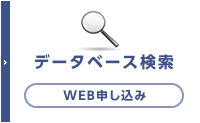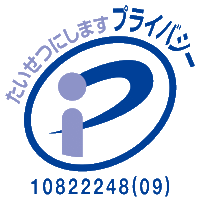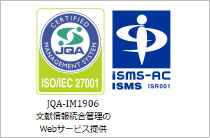ホームIMICライブラリMMWR抄訳2016年(Vol.65)オルソポックスウイルスへの職業的曝露リスクのある研・・・
2016/03/18Vol. 65 / No. 10
MMWR65(10):257-262
Use of Vaccinia Virus Smallpox Vaccine in Laboratory and Health Care Personnel at Risk for Occupational Exposure to Orthopoxviruses — Recommendations of the Advisory Committee on Immunization Practices (ACIP), 2015
オルソポックスウイルスへの職業的曝露リスクのある研究室および医療従事者に対するワクシニアウイルス天然痘ワクチンの利用 ― Advisory Committee on Immunization Practices (ACIP)の勧告、2015年
2015年6月25日、Advisory Committee on Immunization Practices (ACIP)は職業的にオルソポックスウイルスへの曝露リスクのある研究室職員および医療従事者に対するワクシニアウイルス痘瘡ワクチンの接種に関する勧告を発表した。現在、接種可能な痘瘡ワクチンはACAM2000のみであり、ACIPが推奨していた痘瘡ワクチン(Dryvaxワクチン)は2008年に承認が取り消されている。ACAM2000はDryvaxの製造に使用されたNew York City Board of Health株のプラーク精製クローン由来であり、臨床試験ではDryvaxと同等の安全性が示されている。2004~2014年、アメリカではオルソポックスウイルス感染は研究室職員14名にて報告されており、うち13名はACIP勧告に従うワクチン接種を受けていなかった。また、この期間、予防可能なワクチンに関連する重篤な有害事象(ワクシニア湿疹、進行性ワクシニア、接触感染など)は報告されていない。ACIPの勧告は、直接、1)クラスター、2)汚染動物または複製可能なワクシニアウイルス、複製可能なワクシニアウイルス由来のリコンビナントワクシニアウイルス、またはその他のヒトに感染するオルソポックスウイルス(サル痘、ウシ痘、痘瘡など)を扱う研究室職員に対する生痘瘡(ワクシニア)ワクチン(ACAM2000)の定期的接種を推奨している(カテゴリーA)。ワクシニアウイルス感染患者を治療する、あるいは治療する可能性のある医療従事者(医師、看護師)、複製可能なワクシニアウイルスへの曝露が衣類などの汚染物に限られる場合、または感染予防のためACAM2000の接種を受けたヒトに対するACAM2000の接種も推奨されている(カテゴリーB)。複製可能なワクシニアウイルスや複製可能なワクシニアウイルス由来のリコンビナントワクシニアウイルスを扱う研究室職員はACAM2000を少なくとも10年ごとに接種、より毒性の高いウイルス(痘瘡、サル痘)を扱う場合は少なくとも3年ごとの接種が推奨される。また、ACAM2000はアトピー性皮膚炎、他の活動性剥脱性皮膚炎、免疫抑制状態(HIV/AIDS、白血病、リンパ腫、全身性悪性腫瘍、臓器移植、またはアルキル化剤、代謝拮抗剤、TNF阻害薬、高用量コルチコステロイド投与、血液幹細胞移植、自己免疫性疾患など)に対しては禁忌であり、また、18歳未満の小児に対する接種は推奨されていない。
References
- Rotz LD, Dotson DA, Damon IK, Becher JA; Advisory Committee on Immunization Practices. Vaccinia (smallpox) vaccine: recommendations of the Advisory Committee on Immunization Practices (ACIP), 2001. MMWR Recomm Rep 2001;50(No. RR-10).
- CDC. Newly licensed smallpox vaccine to replace old smallpox vaccine. MMWR Morb Mortal Wkly Rep 2008;57:207–8.
- Fenner F, Henderson D, Arita I, Jezek Z, Ladnyi I. Smallpox and its eradication. Geneva, Switzerland: World Health Organization; 1988.
- Greenberg RN, Kennedy JS. ACAM2000: a newly licensed cell culture-based live vaccinia smallpox vaccine. Expert Opin Investig Drugs 2008;17:555–64. <http://dx.doi.org/10.1517/13543784.17.4.555>
- Frey SE, Newman FK, Kennedy JS, et al. Comparison of the safety and immunogenicity of ACAM1000, ACAM2000 and Dryvax in healthy vaccinia-naive adults. Vaccine 2009;27:1637–44. <http://dx.doi.org/10.1016/j.vaccine.2008.11.079>
- Sanofi-Pasteur. ACAM2000, (smallpox (vaccinia) vaccine, live) [package insert]. Swiftwater, PA: Sanofi-Pasteur; 2015. <http://www.fda.gov/downloads/BiologicsBloodVaccines/Vaccines/ApprovedProducts/UCM142572.pdf>
- Verardi PH, Titong A, Hagen CJ. A vaccinia virus renaissance: new vaccine and immunotherapeutic uses after smallpox eradication. Hum Vaccin Immunother 2012;8:961–70. <http://dx.doi.org/10.4161/hv.21080>
- MacNeil A, Reynolds MG, Damon IK. Risks associated with vaccinia virus in the laboratory. Virology 2009;385:1–4. <http://dx.doi.org/10.1016/j.virol.2008.11.045>
- Paoletti E, Taylor J, Meignier B, Meric C, Tartaglia J. Highly attenuated poxvirus vectors: NYVAC, ALVAC and TROVAC. Dev Biol Stand 1995;84:159–63.
- Moss B. Replicating and host-restricted non-replicating vaccinia virus vectors for vaccine development. Dev Biol Stand 1994;82:55–63.
- Ahmed F, Temte JL, Campos-Outcalt D, Schünemann HJ; ACIP Evidence Based Recommendations Work Group (EBRWG). Methods for developing evidence-based recommendations by the Advisory Committee on Immunization Practices (ACIP) of the US Centers for Disease Control and Prevention (CDC). Vaccine 2011;29:9171–6. <http://dx.doi.org/10.1016/j.vaccine.2011.08.005>
- Ahmed F. US Advisory Committee on Immunization Practices handbook for developing evidence-based recommendations [Version 1.2]. Atlanta, GA: CDC; 2013. <http://www.cdc.gov/vaccines/acip/recs/GRADE/about-grade.html>
- CDC. GRADE evidence tables—recommendations in MMWR. Atlanta, GA: US Department of Health and Human Services, CDC; 2015. <http://www.cdc.gov/vaccines/acip/recs/GRADE/table-refs.html>
- Poland GA, Grabenstein JD, Neff JM. The US smallpox vaccination program: a review of a large modern era smallpox vaccination implementation program. Vaccine 2005;23:2078–81. <http://dx.doi.org/10.1016/j.vaccine.2005.01.012>
- Lane JM, Ruben FL, Neff JM, Millar JD. Complications of smallpox vaccination, 1968. N Engl J Med 1969;281:1201–8. <http://dx.doi.org/10.1056/NEJM196911272812201>
- Lane JM, Ruben FL, Neff JM, Millar JD. Complications of smallpox vaccination, 1968: results of ten statewide surveys. J Infect Dis 1970;122:303–9. <http://dx.doi.org/10.1093/infdis/122.4.303>
- Chosewood LC, Wilson DE; CDC; National Institutes of Health. Biosafety in microbiological and biomedical laboratories. 5th ed. Washington, DC: US Department of Health and Human Services, Public Health Service, CDC, National Institutes of Health; 2009.
- Pirwitz S. HICPAC guidelines for isolation precautions. Am J Infect Control 1997;25:287–8. <http://dx.doi.org/10.1016/S0196-6553(97)90017-1>
- Sehulster L, Chinn RY. Guidelines for environmental infection control in health-care facilities. Recommendations of CDC and the Healthcare Infection Control Practices Advisory Committee (HICPAC). MMWR Recomm Rep 2003;52(No. RR-10).
- US Food and Drug Administration. ACAM2000 smallpox vaccine: Vaccines and Related Biological Products Advisory Committee (VRBPAC) briefing document. Washington, DC: US Food and Drug Administration; 2007. <http://www.fda.gov/ohrms/dockets/ac/07/briefing/2007-4292b2-02.pdf>
- Arness MK, Eckart RE, Love SS, et al. Myopericarditis following smallpox vaccination. Am J Epidemiol 2004;160:642–51. <http://dx.doi.org/10.1093/aje/kwh269>
Copyright © 2013 International Medical Information Center. All Rights Reserved.












